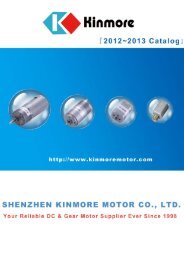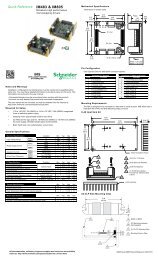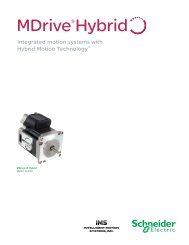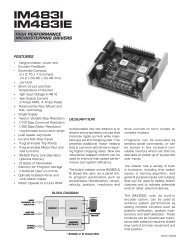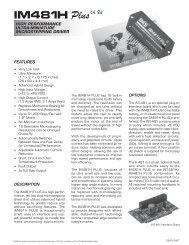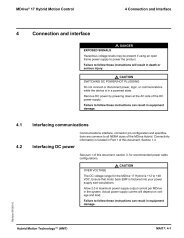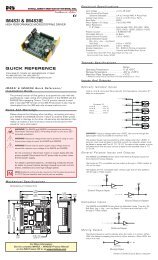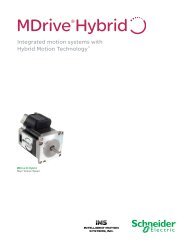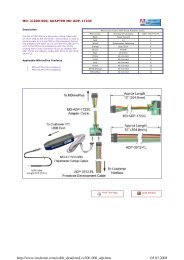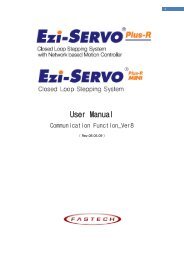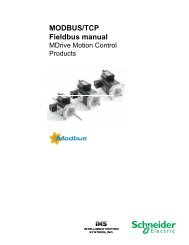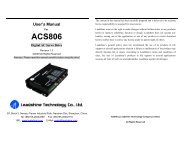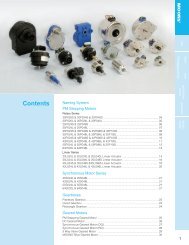MDrive 23 Plus2 EtherNet/IP - Koco Motion GmbH
MDrive 23 Plus2 EtherNet/IP - Koco Motion GmbH
MDrive 23 Plus2 EtherNet/IP - Koco Motion GmbH
Create successful ePaper yourself
Turn your PDF publications into a flip-book with our unique Google optimized e-Paper software.
V1.000, 10.2011<br />
<strong>MDrive</strong>Plus <strong>EtherNet</strong>/<strong>IP</strong> 12 Glossary<br />
Integrated <strong>Motion</strong> System<br />
Ground Loop A ground loop is any part of the DC return path (ground) that has more<br />
than one possible path between any two points.<br />
Half Duplex A ground loop is any part of the DC return path (ground) that has more<br />
than one possible path between any two points.<br />
Half Step This term means that the motor shaft will move a distance of 0.9 degree<br />
(400 steps per shaft revolution) instead of moving 1.8 degree per digital<br />
pulse.<br />
Hybrid <strong>Motion</strong> Technology (HMT) A motor control technology representing a new paradigm in brushless<br />
motor control. By bridging the gap between stepper and servo performance,<br />
HMT offers system integrators a third choice in motion system<br />
design.<br />
Hybrid Motors Hybrid stepper motors feature the best characteristics of PM and VR<br />
motors. Hybrid steppers are best suited for industrial applications because<br />
of high static and run torque, a standard low step angle of 1.8°,<br />
and the ability to Microstep. Hybrid stepper motors offer the ability to<br />
precisely position a load without using a closed-loop feedback device<br />
such as an encoder.<br />
Holding Torque The maximum torque or force that can be externally applied to a<br />
stopped, energized motor without causing the rotor to rotate continuously.<br />
This is also called “static torque”.<br />
I/O Inputs/outputs<br />
Inc Increments<br />
Index pulse Signal of an encoder to reference the rotor position in the motor. The<br />
encoder returns one index pulse per revolution.<br />
Inertia A measure of an object’s resistance to a change in velocity. The larger<br />
an object’s inertia, the greater the torque required to accelerate or<br />
decelerate it. Inertia is a function of an object’s mass and shape. For the<br />
most efficient operation, the system-coupling ratio should be selected<br />
so that the reflected inertia of the load is equal to or no greater than 10<br />
times the rotor inertia of the stepper motor.<br />
Inertia (Refl ected) Inertia as seen by the stepper motor when driving through a speed<br />
change, reducer or gear train.<br />
Lag The amount (in full motor steps) that the rotor lags the stator. Lag conditions<br />
are caused by loading on the motor shaft, as during transient loading<br />
or rapid acceleration.<br />
69



